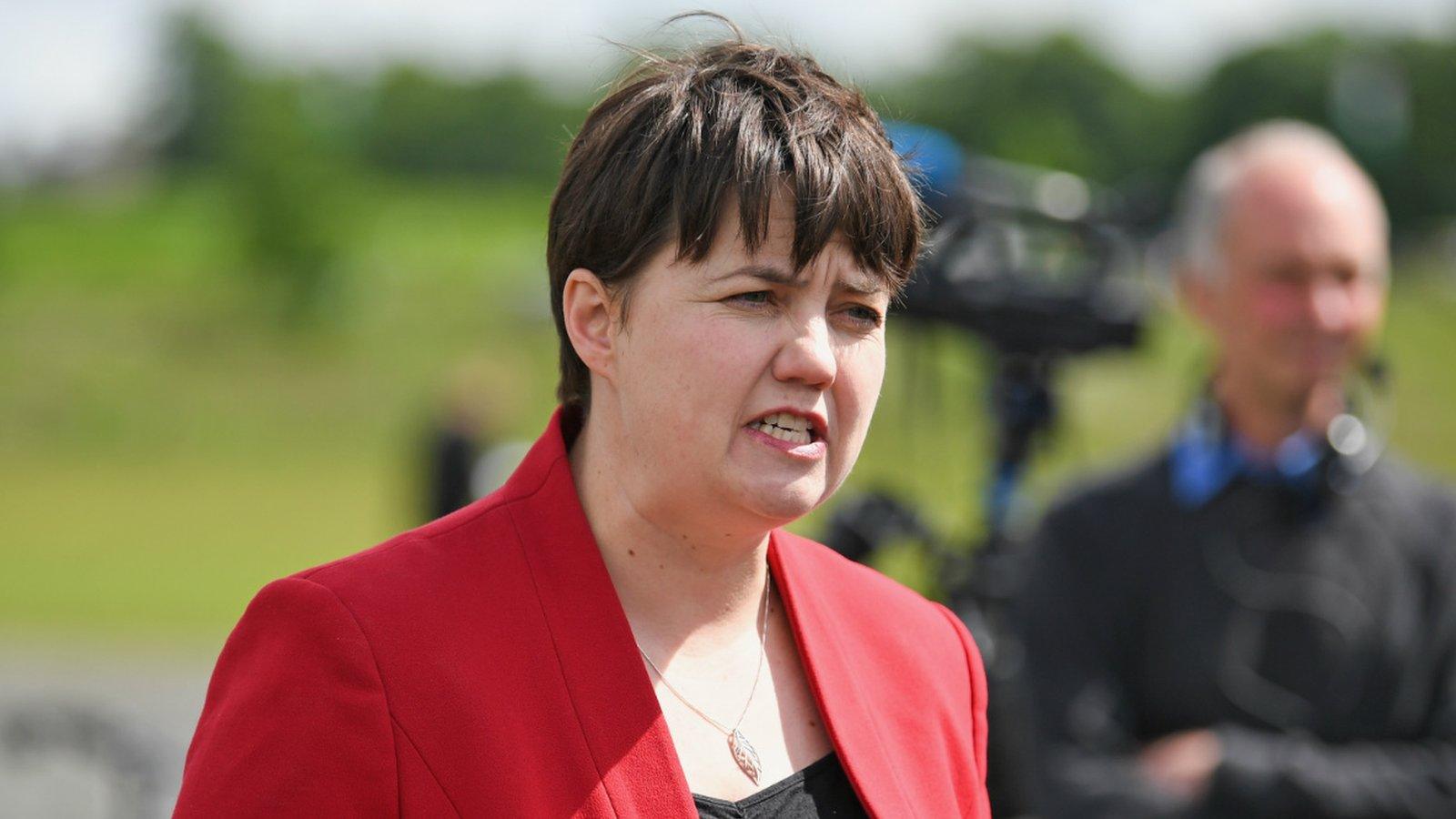Profile: Scottish Conservative Ruth Davidson
- Published
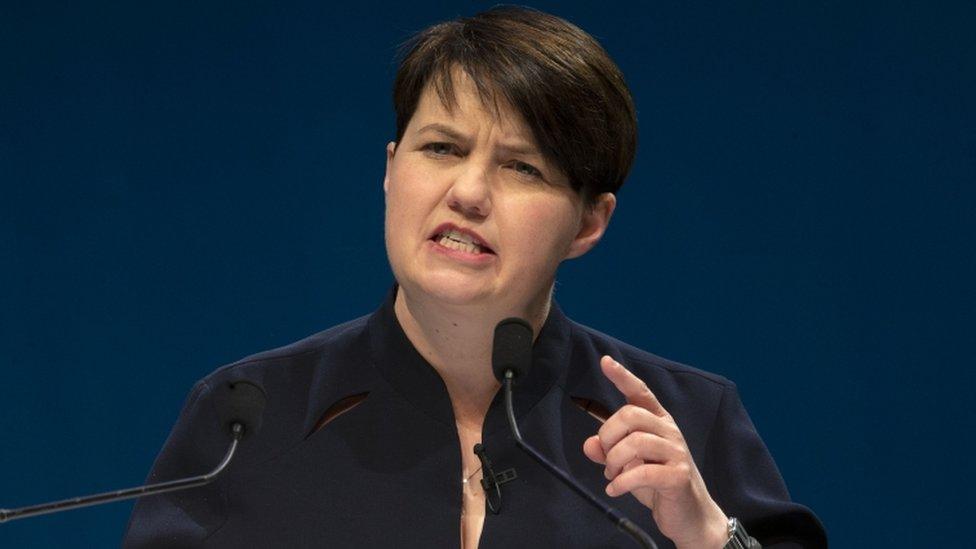
Ruth Davidson became leader of the Scottish Conservatives in November 2011
Ruth Davidson has resigned as leader of the Scottish Conservatives after almost eight years in charge.
In her resignation letter, she said she had not hidden the "conflict" she felt over Brexit.
But she added that the birth of her son in October last year was the biggest change in her life and had led her to make a different choice about where her priorities lie.
She said the threat of spending hundreds of hours away from her home and family fighting election campaigns "now fills me with dread".
While she said she would continue to support the party and Prime Minister Boris Johnson, she is known to be deeply unhappy with his pursuit of a possible no-deal Brexit.
She did not support Mr Johnson when he was campaigning to be Conservative leader and has often come into conflict with him over Brexit.
Ms Davidson campaigned for a Remain vote during the 2016 EU referendum and put in a typically passionate performance while repeatedly clashing with Mr Johnson in a TV debate days before the vote.
EU Referendum: Davidson and Johnson close Great Debate
After the UK voted to leave the European Union, she pushed for a deal that would mean the UK remained part of the European Single Market and Customs Union.
At the same time, she continued her objection to a second referendum on Scottish independence, saying this was not the answer to concerns raised by the prospect of leaving the EU.
Ms Davidson, who turned 40 late last year, has only been a Conservative Party member for a decade.
But after her meteoric rise to the top, her party has seen a remarkable turnaround of fortunes in a country where the Tories had been a toxic brand since the days of Margaret Thatcher.
From a very low base, the Scottish Tories overtook Labour to become the second-largest party in the Scottish Parliament and official opposition of the Scottish government.
At the 2017 snap election, they returned 13 Scottish Tory MPs to Westminster, enough to keep Theresa May in power as prime minister.
Much of Ms Davidson's wider appeal comes from her not being seen as a "typical" Tory - often being referred to instead as a "kickboxing lesbian".
In the past, Ms Davidson has referred to LGBTI rights as one thing she cares about more than her party.
In October last year, she celebrated the birth to a baby boy with her partner Jen Wilson.
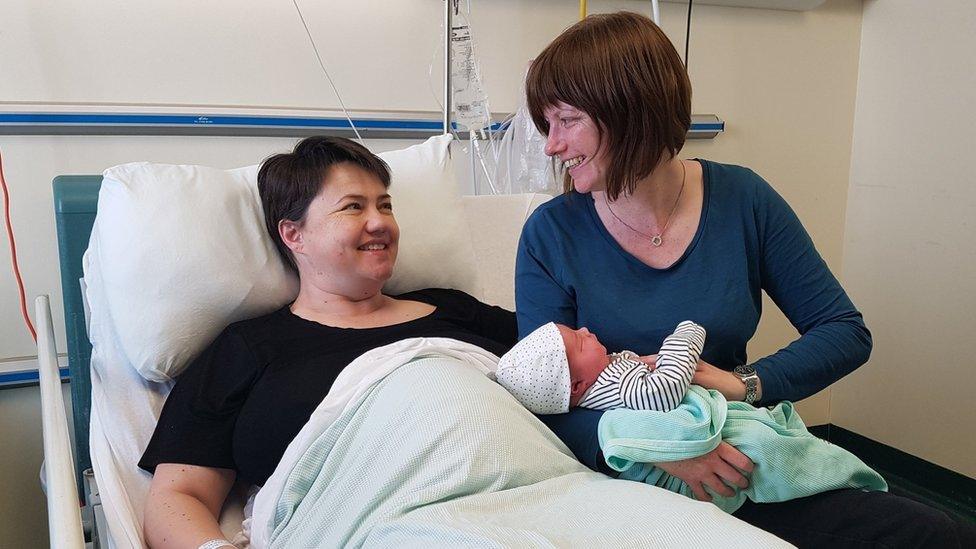
Ms Davidson tweeted a picture of herself with Finn and her partner Jen Wilson
Born in Edinburgh and raised in the Borders and Fife, she studied at Edinburgh University before pursuing a career as a journalist. She worked at Kingdom FM in Fife, before moving to BBC Scotland in Glasgow in 2002.
She left the BBC in 2009 and stood unsuccessfully to be an MP in Glasgow North East twice in quick succession, in a by-election in 2009, external and then in the 2010 general election.
In the 2011 Scottish Parliament election, Ms Davidson then ran in the Glasgow Kelvin constituency.
She finished a distant fourth, but was elected to Holyrood via the regional top-up list system - having been promoted to the top only after fellow list colleague Malcolm Macaskill stood down.
The new MSP was provided with an immediate opportunity for further advancement. After the election, which saw the Tories drop two seats as Alex Salmond's SNP surged to an unprecedented majority, Annabel Goldie resigned as Scottish Tory leader.
Ms Davidson, then aged 32, was one of four candidates for the job and declared the winner in November 2011.

First interview following leadership election - 'We are a country with its best days ahead of it'
Ruth Davidson tells the BBC that she offers "the generational change that our party has been looking for"

Defenders of the Union
The 2014 Scottish independence referendum was where the Tory revival really began.
Ms Davidson was part of the Better Together campaign during the poll, which finished with the No side winning by 55% to 45%.
In the aftermath, as the SNP surged and Labour collapsed, she shaped her party firmly as the defenders of the Union, seeking to sweep up support from the 55%.
There wasn't an immediate bounce - in the 2015 general election it was the SNP who dominated, winning 56 of Scotland's 59 Westminster seats.
The Conservatives took one - but they were starting from a very low base, having won at best a single seat in each contest since 1992.

Ms Davidson has a fondness for a wacky photocall
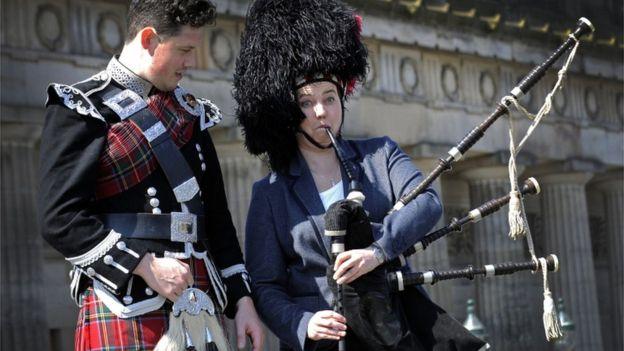
Ruth Davidson is an energetic campaigner, up for most things, including a shot at playing the bagpipes
But with the issue of the union continuing to play a major role in Scottish politics, Ms Davidson's strategy was to pay off in style in the 2016 Holyrood elections.
Ahead of the poll, Ms Davidson announced she was switching constituency, from Glasgow to Edinburgh.
A politician known as an energetic campaigner, she was often the subject of colourful photo opportunities - including standing astride a tank flying a union jack flag.
For the 2016 campaign she rode a buffalo, played ice hockey, pulled countless pints and drove everything from a racing car to a crane to a snowmobile.
Not only did she score an unexpected victory in Edinburgh Central, gaining the seat from the SNP, her Tories leapfrogged Labour into second place.
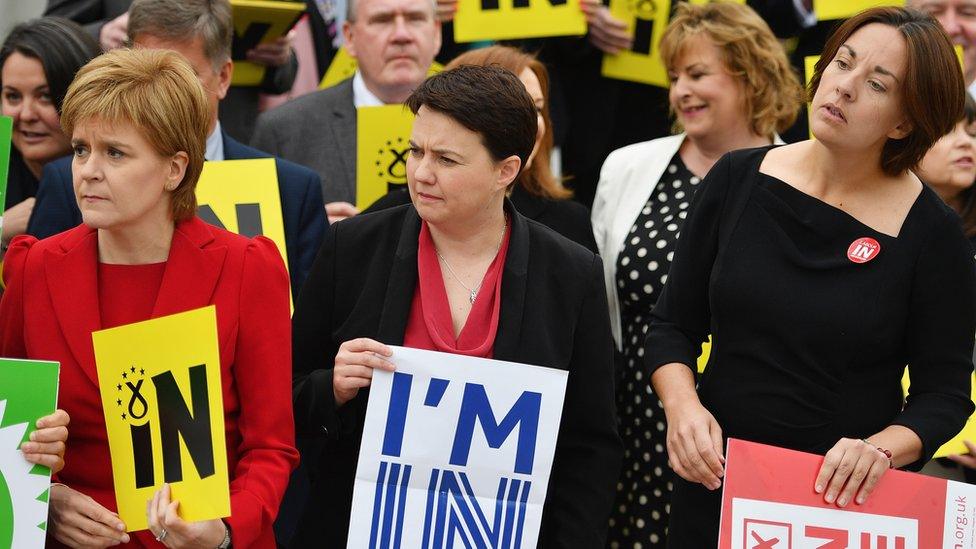
Ruth Davidson was a leading voice in the Remain campaign across the UK
This left Ms Davidson as the main sparring partner for First Minister Nicola Sturgeon at weekly question sessions, giving her a new platform.
While defence of the union and opposition to a second independence referendum remained at the core of the Scottish Tory approach, Ms Davidson broadened her attacks to focus on education in particular.
Hot on the heels of the Holyrood election though was the EU referendum - and here, Ms Davidson found herself on the same side as Ms Sturgeon.
The result was a disappointment to the Scottish Tory leader - but she adapted, positioning herself on the soft-Brexit wing of the ensuing debate, continuing to advocate single market access.

Ruth Davidson is an energetic campaigner
In the subsequent Conservative leadership contest, triggered by the resignation of David Cameron, some called for Ms Davidson to seek a move to Westminster.
She ruled that out saying that she had a "pretty bloody big job" in Scotland, instead endorsing the candidacy of Theresa May.
In an interview with the Sunday Times Magazine, she revealed her struggles with self-harm, suicidal thoughts and depression as a teenager.
After giving birth last year, she stepped back from frontline politics to go on maternity leave.
Ms Davidson made her comeback speech at the Scottish Conservative conference in Aberdeen in May.
In her resignation letter, she said that party and work had always come first, often at the expense of commitments to loved ones.
"The arrival of my son means I now make a different choice," she said.
- Published4 May 2019

- Published26 October 2018

- Published16 September 2018
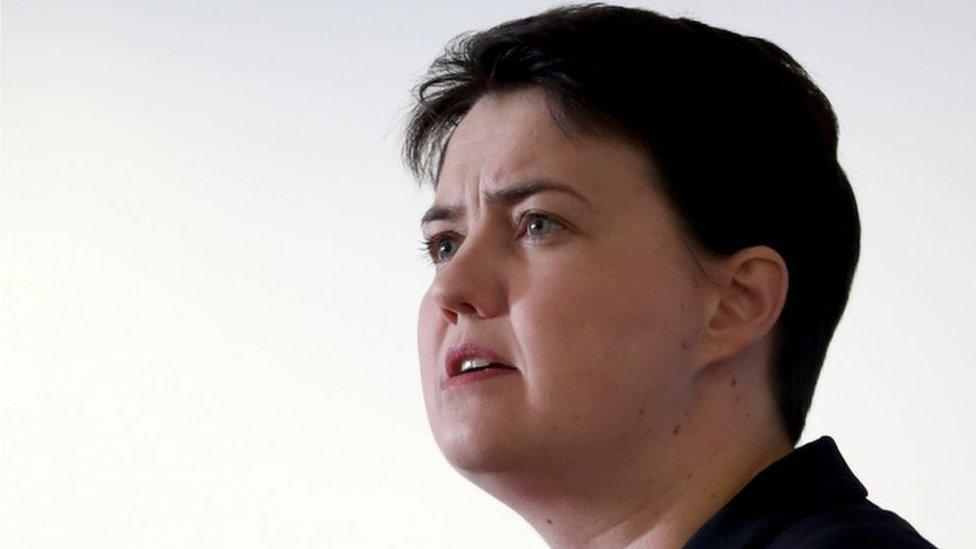
- Published9 June 2017
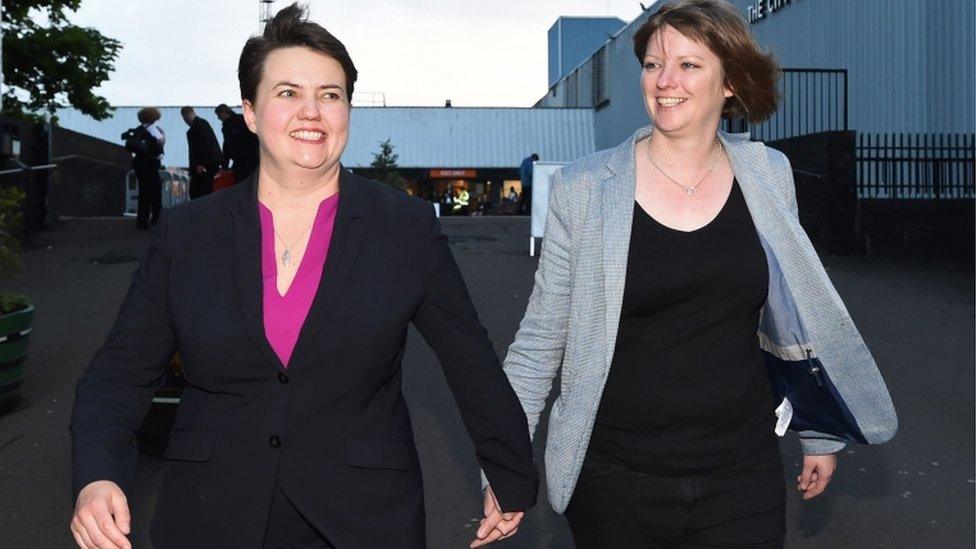
- Published10 June 2017
